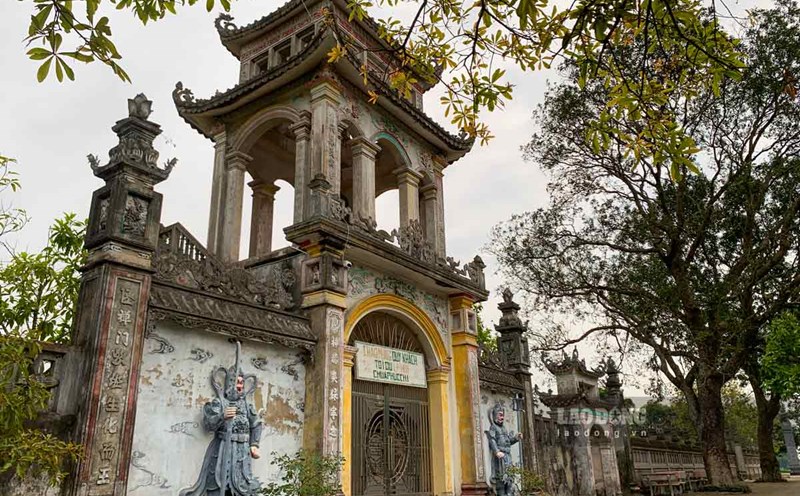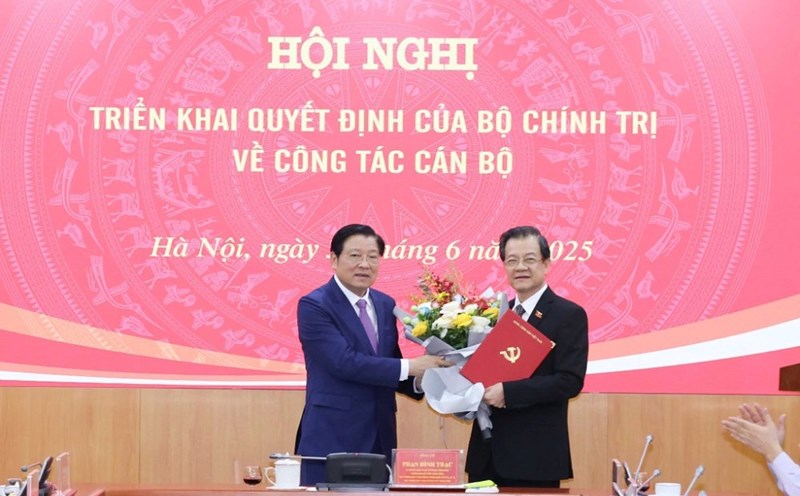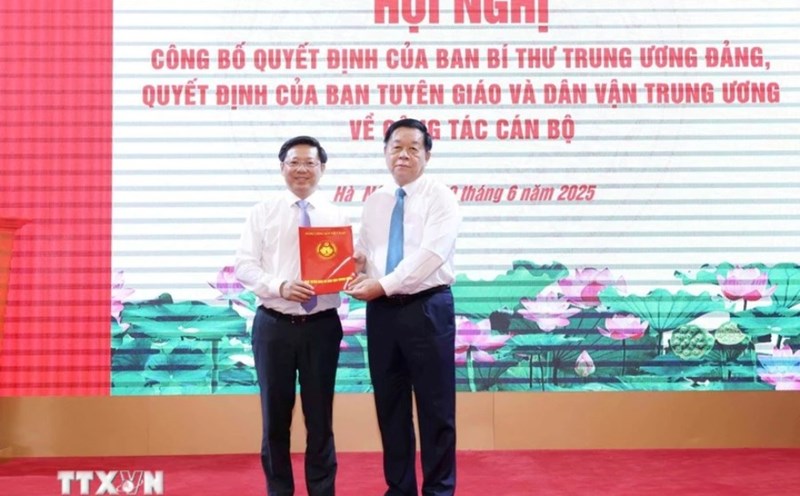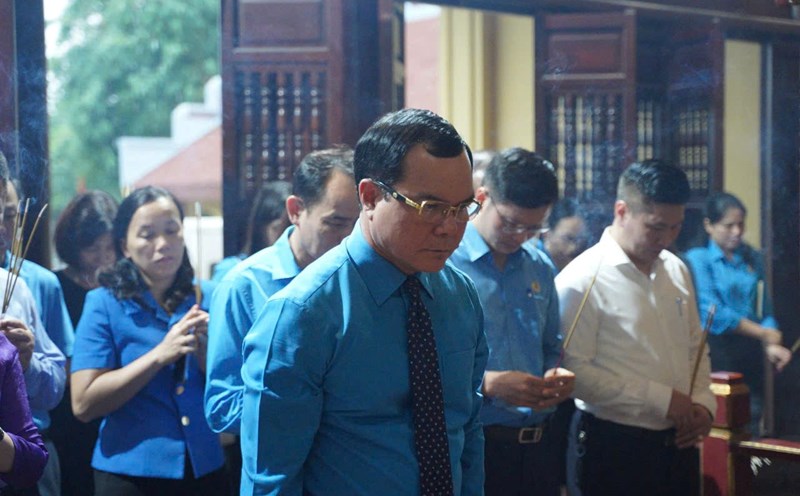The ancient Ly Dynasty in Thang Long
Hoe Nhai Pagoda is named Hong Phuc Tu, in the past of Hoe Nhai ward, Thuong Thuong, Vinh Thuan district, Thang Long citadel. Today the pagoda is located at 19 Hang Than Street, Nguyen Trung Truc Ward, Ba Dinh District, Hanoi. According to the legend, this is the largest temple in the ancient Thang Long capital, located near the Eastern Ben Ben, where the Tran army's counterattack took place to defeat the invaders of Mongolia in 1258.
At the pagoda, there was still an epitaph called "Phuc Dien Vo Cuong" was created in the 24th year of Hoa (1703) under King Le Hy Tong, recorded about the background of the temple as follows: "Hoe Nhai Ward, Eastern Dau Dau area, Thang Long citadel of Dai Viet has a pagoda named Hong Phuc, Lo Giang (Hong River), which is covered with Lich, Anti -Disadvantages, which is in the direction of the god ...".
The pagoda was originally built in the early 11th century under the Ly dynasty, but over time, the war was devastated. By the end of the 17th century (in 1698), there was a nanny of King Le Hy Tong named Nguyen Thi Phan, the legal name Tu Du in this ward stood out to raise merit of the cross, Hung Cong rebuilt the temple, then invited Zen Master Giac Thuy Nguyet to be the abbot of this temple.
Hoe Nhai Pagoda is known to Buddhists from the cross as the temple of the Second National Master, the Schisandra and the Master. Especially, the pagoda is a place where Zen Master Giac Thuy Nguyet - who brought Cao Cao Zen into our country in the 17th century. Since 1664, he and his two disciples went to Ho Chau (China) to study with Zen Master Nhat Tri Tri at Mount Phung Hoang. After 3 years of studying, in 1667, he returned home and continued to cultivate at Vong Lao pagoda in An Son Mountain, Dong Trieu District, Hai Duong Province, then he continued to preach to many Buddhists in many different places.
Among the countless disciples who were transmitted by Zen Master Thuy Nguyet, who succeeded in the lineage of Zen Zen Zen Zen Cao Dynasty is the Great Wisdom - Zen Master Portrait of Tong Tong. In the future, Hoe Nhai Pagoda was also the first place of the Dharma Church of the Vietnam Buddhist Church - the late Venerable Thich Duc Nhuan as the abbot and practice until the passing away. Throughout the time, the only tone of the Cao Cao Zen Zen is: Unmatched, uncomfortable, the most heart -like, the most evidence like.
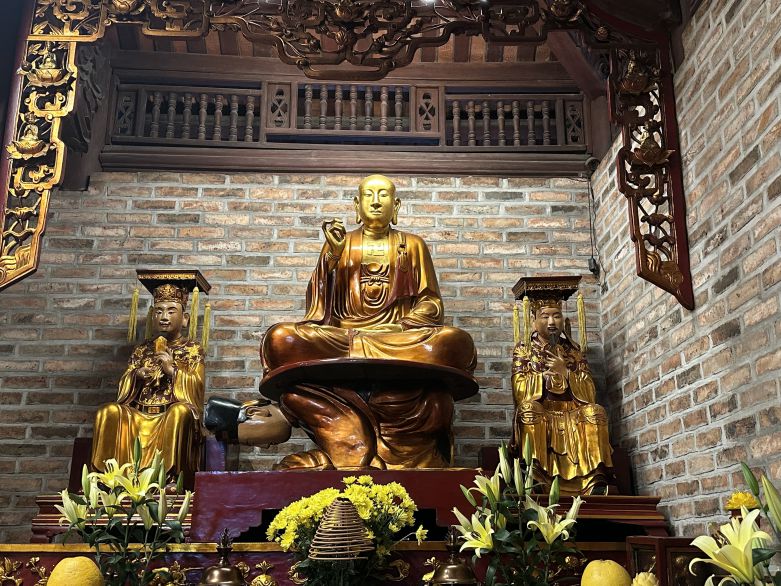
Traditional Buddhist architecture
In the past, the pagoda had a very large area, under the French colonial period, the pagoda was shrunk, today the pagoda is located on an area of about 3,000m2. The overall architecture of Hoe Nhai pagoda is built in the style of "foreign internal work", the main architectural areas are designed on a straight and unified axis.
The pagoda turned to the West, the Tam Quan gate was built in the style of the four pillars, featuring the architectural style of the Nguyen Dynasty. Going through the Tam Quan gate, in the front yard of the pagoda, there were three worshiping towers, commemorating the monks and nuns who passed away here. In which the outermost tower is called "An Quang", built in 1963 to commemorate Thich Quang Duc's self -immolation in Saigon to denounce the crimes of the US -puppet government.
In 1963, the Ngo Dinh Diem government suppressed the people and Buddhists, the monks and nuns of Vietnam were brutally, so on May 27, 1963, Venerable Thich Quang Duc went to An Quang Bach Pagoda with Thich Thien Hoa - Head of the Church of the Old Sangha of Nam Viet and applied for the burning body, on April 20, 1963, he set himself at the crossroads of Phan Dinh Phung - Le Van Duyet (now Nguyen Dinh Chieu, Ho Chi Minh City, Ho Chi Minh City, Ho Chi Minh City, Ho Chi Minh City.
The main architectural part of the pagoda consists of 5 temples, according to the pipe axis that wants to lead to the three main halls forming the shape of "public", running around the architecture is the outer corridor. The main architecture was built in the style of "husband of matches, two roofs" from the Le - Mac, wall built to the wood, on the walls were bloomed with decorative circular windows, creating a sense of ventilation for the worship space without losing its own space when inside. In addition, other architectures are built surrounding the main architecture, including: Houses, increasing rooms, model houses.
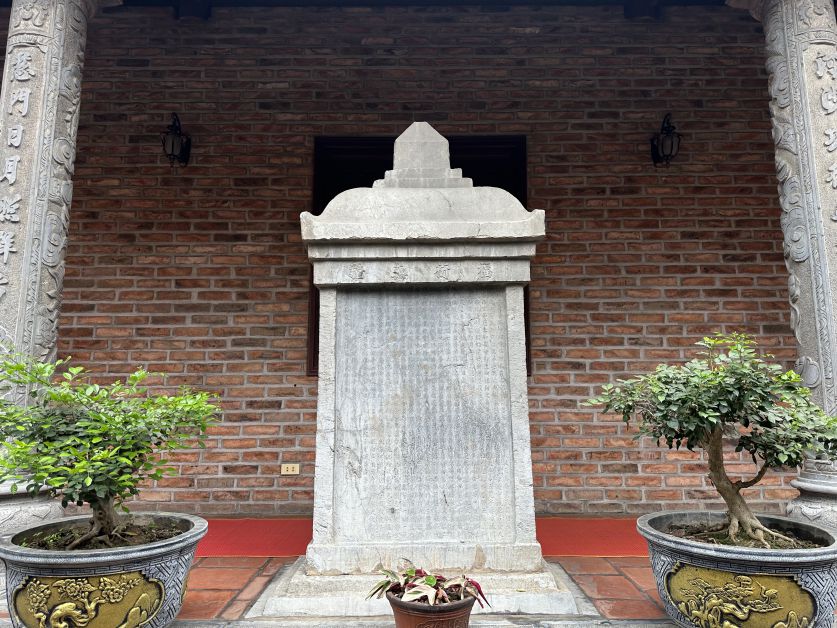
Special relics system of Hoe Nhai pagoda
At Hoe Nhai Pagoda, there were still 28 stele steles, of which the earliest stele was dating back to the early 18th century (1703). Especially in the main hall is also worshiping a stele called "Serving the post -Buddha's Bamboo", on the stele carved 3 reliefs, on the top is a small relief with a Buddha shaped meditation on the lotus platform, below are two large reliefs with two nuns in the sitting position.
Currently, the pagoda has a total of 68 statues with materials: copper, terracotta and precious wood are painted gold. The altar system is decorated in the Buddha, consisting of 6 layers of statues, most of the statues carry the lines of the 18th century, the most typical is the newborn Shakyamuni. At the ancestor's house, the total number of statues of up to 15 statues was worshiped at the ancestor's house with two statues of Shakyamuni Buddha and the Bo De Dat Ma statue.
Referring to Hoe Nhai pagoda, it is impossible not to mention the statue of "penance" - a unique statue in Vietnam. Overall the statue is higher than 3m, divided into two parts, above is a Buddha in the sitting position, below is a kneeling and carrying Buddha above.
According to folk legends, this is the statue of King Le Hy Tong kneeling and carrying Buddha on his back. However, based on the style of artistic and costumes, nor does it have any source of records of the statue's background. The majority of researchers doubt and make different theories about the story of this statue. According to the book "Human Eye of the Muc" was engraved at Hoe Nhai Pagoda, mentioning that a Sanskrit has let the Buddha sit on his body to preach to the disciples. The researchers also based on these documents to prove that the statue of King Le Hy Tong carried Buddha.
In 2006, UNESCO recognized the Buddha's birthday as a world religious festival, many famous Buddhist cultural works across Asia were mentioned and recognized, including the statue of "penance" of Hoe Nhai pagoda.


